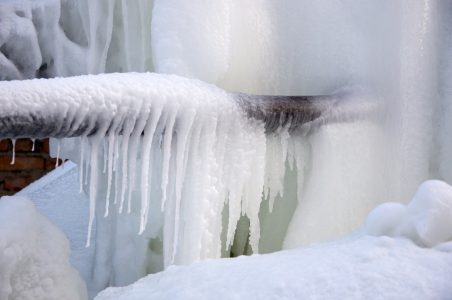Crucial Tips to Avoid Frozen Plumbing in Winter: Expert Insights
Crucial Tips to Avoid Frozen Plumbing in Winter: Expert Insights
Blog Article
Here below you'll find lots of decent facts with regards to Prevent Frozen Pipes .

Winter can wreak havoc on your pipes, especially by freezing pipelines. Below's exactly how to prevent it from taking place and what to do if it does.
Introduction
As temperature levels drop, the danger of icy pipes boosts, possibly bring about pricey repairs and water damages. Understanding how to prevent icy pipelines is crucial for homeowners in cold climates.
Prevention Tips
Shielding at risk pipelines
Cover pipes in insulation sleeves or use heat tape to shield them from freezing temperature levels. Concentrate on pipes in unheated or exterior locations of the home.
Heating strategies
Keep interior rooms appropriately warmed, particularly locations with plumbing. Open cupboard doors to enable cozy air to flow around pipelines under sinks.
Exactly how to identify frozen pipes
Search for decreased water flow from faucets, unusual odors or noises from pipes, and noticeable frost on exposed pipelines.
Long-Term Solutions
Architectural changes
Take into consideration rerouting pipes far from exterior walls or unheated locations. Include extra insulation to attics, basements, and crawl spaces.
Upgrading insulation
Purchase top quality insulation for pipelines, attic rooms, and walls. Correct insulation aids keep constant temperature levels and decreases the threat of frozen pipes.
Safeguarding Outside Pipes
Garden hose pipes and exterior taps
Detach and drain garden hoses prior to wintertime. Install frost-proof spigots or cover exterior taps with shielded caps.
Understanding Frozen Pipes
What creates pipelines to freeze?
Pipes ice up when revealed to temperatures listed below 32 ° F (0 ° C) for expanded durations. As water inside the pipelines freezes, it expands, taxing the pipeline wall surfaces and potentially creating them to break.
Dangers and problems
Frozen pipelines can cause water system interruptions, building damage, and pricey fixings. Burst pipes can flooding homes and cause comprehensive structural damages.
Indicators of Frozen Water Lines
Recognizing icy pipes early can avoid them from breaking.
What to Do If Your Pipes Freeze
Immediate actions to take
If you believe frozen pipelines, maintain faucets open to soothe pressure as the ice thaws. Use a hairdryer or towels taken in warm water to thaw pipes slowly.
Verdict
Protecting against icy pipelines needs aggressive procedures and fast responses. By comprehending the reasons, indications, and safety nets, property owners can safeguard their plumbing during cold weather.
5 Ways to Prevent Frozen Pipes
Drain Outdoor Faucets and Disconnect Hoses
First, close the shut-off valve that controls the flow of water in the pipe to your outdoor faucet. Then, head outside to disconnect and drain your hose and open the outdoor faucet to allow the water to completely drain out of the line. Turn off the faucet when done. Finally, head back to the shut-off valve and drain the remaining water inside the pipe into a bucket or container. Additionally, if you have a home irrigation system, you should consider hiring an expert to clear the system of water each year.
Insulate Pipes
One of the best and most cost-effective methods for preventing frozen water pipes is to wrap your pipes with insulation. This is especially important for areas in your home that aren’t exposed to heat, such as an attic. We suggest using foam sleeves, which can typically be found at your local hardware store.
Keep Heat Running at 65
Your pipes are located inside your walls, and the temperature there is much colder than the rest of the house. To prevent your pipes from freezing, The Insurance Information Institute suggests that you keep your home heated to at least 65 degrees, even when traveling. You may want to invest in smart devices that can keep an eye on the temperature in your home while you’re away.
Leave Water Dripping
Moving water — even a small trickle — can prevent ice from forming inside your pipes. When freezing temps are imminent, start a drip of water from all faucets that serve exposed pipes. Leaving a few faucets running will also help relieve pressure inside the pipes and help prevent a rupture if the water inside freezes.
Open Cupboard Doors
Warm your kitchen and bathroom pipes by opening cupboards and vanities. You should also leave your interior doors ajar to help warm air circulate evenly throughout your home.

I recently found that blog posting on Prevent Frozen Pipes while doing research the search engines. Sharing is good. Helping others is fun. Thanks a bunch for being here. Revisit us soon.
Book-Now Report this page